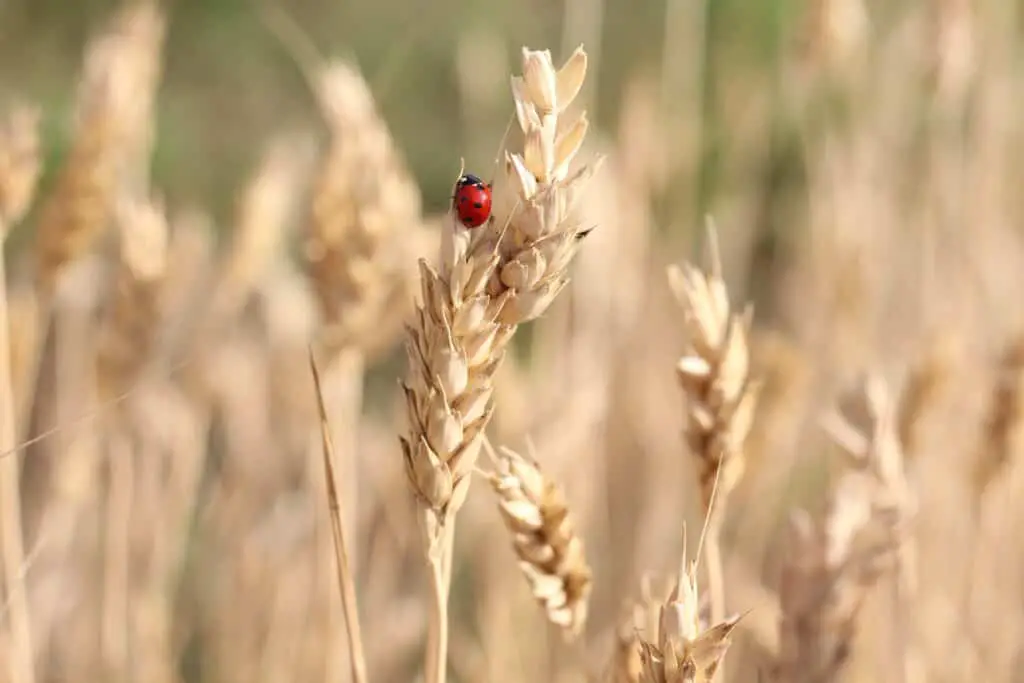Finding bugs in your flour can be frustrating and gross. If you’re planning to use the flour that same day or are in a rush to try a new recipe, you might be wondering if it’s safe to use the flour despite the bugs. Knowing the types of bugs that can be in flour and knowing how to avoid them in the future will ensure you can avoid this problem in the future.
Why are there bugs in my flour?
Your first question when you see the bugs might be “How do they get there?” Flour bugs are often mites, bugs, weevils, and beetles. They might also be called rice bugs, wheat bugs, or flour worms. These small bugs love flour, cereal, rice, cake mixes, and pasta.
However, they operate differently than other types of bugs and pesky animals you might find in your home. These small bugs also mate while they eat. They will then lay eggs in your flour. When the eggs hatch, the babies will continue to eat and mate in your flour.
This cycle will continue until you break it. You can’t leave the bugs in the flour and expect them to go away on their own.
There are a few reasons you can find these bugs in your flour. Often, female weevils will lay eggs in the wheat kernel in the field. These eggs can survive the milling process sometimes and will end up being brought home with you in your flour. The eggs will then hatch after you bring the flour home, and you will begin having a bug problem.
There isn’t anything you can do about this problem unfortunately when it happens this way. You can check your flour as soon as you get home though. If you find signs of bugs or weevils, throw the flour away immediately. Keeping it in your home will start an endless cycle of finding bugs in your pantry.

How do I know if I have weevils or bugs in my flour?
The eggs are not visible to the naked eye, so you won’t be able to see the eggs. However, you will be able to see signs of them after they have hatched. Here are a few ways to know if they have started hatching in your cabinets or pantry.
Appearance
When weevils are babies, they are light brown and worm-like in appearance. As they grow, they will be a metallic gray color. They skitter and move around fast, so you should be able to see them when you peer into the flour bag or the flour when it’s in the bowl.
Cobwebs
If you see cobwebs in the flour, you definitely have wheat bugs. The larvae are what make the filmy material that looks similar to a spider’s web. If you see any kind of cobweb, you should get rid of the flour.
Spare body parts
If you don’t see any live weevils, you might still be able to see spare body parts that dead weevils have left behind. You might see carcasses or molted skin. Weevils can live several years, so if you see spare body parts, you probably have quite an infestation.
Off odor
Just like with any food, flour can start to smell weird if there are buys in it. Flour bugs can make the flour smell unusual and can make it taste weird. Dead flour worms and feces are in the flour even if you don’t see them, so the flour will always taste strange even if you think you killed all the weevils.
Do flour bugs die in fridge?
Putting your flour in the fridge will make it last longer and make it less susceptible to bugs. However, if you already have an infestation, putting the flour in the fridge will not kill the bugs. If you find bugs and eggs and want to continue to use the flour, you will need to put it in the freezer.
You can stick it in the freezer for four days. This will kill off eggs and larvae, but not all adult bugs. If you think you might have a big problem from a product you brought home from the market, you should stick it in the freezer before you see full bugs skittering around.
What if I eat them?
A couple of bugs in your flour accidentally ingested will not cause too much harm, but it’s best to be avoided. If you see weevils or bugs in the flour, you should toss the flour right away. You should also clean out the cupboards thoroughly in case there is any fecal matter or body parts left behind.
Practicing good hygiene when it comes to food practices is essential. Once your flour bugs start to multiply, you are at risk of contracting a possible foodborne illness since there will be many dead bugs present and fecal matter.
Eating the bugs will not kill you though. The flour will taste strange though and you might not even want to eat whatever you made. If you baked the flour though, chances are you killed all the eggs and adult bugs.
Eating them is usually harmless and won’t make you sick, but you should still avoid eating them just in case.

What should I do if I find bugs in my flour?
As covered above, you will want to toss out any flour you find that has bugs in it. You should also take it to the dumpster or outside garbage area so they don’t continue to hatch and grow inside your home in the garbage can.
You also need to do a deep clean of your pantry and cabinets. You don’t want old body parts left behind or fecal matter. This can get on other products you have in your pantry. You also need to inspect all your other dry goods to make sure the infestation didn’t spread.
In general, don’t panic though. Flour bugs are easy to get rid of and you don’t need to worry if you accidentally ate some. Just take steps to throw away the flour as soon as possible and clean all the surfaces the flour might have come into contact with.
Steps for preventing flour bugs
There are some steps you can take to prevent flour bugs from getting into your home. There are also additional steps you can take after finding the bugs to ensure you get rid of them all and they won’t reappear.
Check all your products before putting them in the pantry
Sometimes the eggs and bugs will already be in the flour when you buy it at the store. Checking all your flour and other dry goods before putting them away will ensure that you don’t bring an infestation into your home.
Throw out flour right away if you see signs of bugs. You can also immediately take it back to the store if you want to receive your money back. Make sure you do this right away though and don’t leave the bag of flour in your car.
Deep clean
Before buying new flour or putting our dry goods back into the cabinets after finding bugs, you will want to make sure to clean everything. Make sure to use white vinegar and hot soapy water. If you have a handheld vacuum or vacuum attachments, you can also clean the shelves this way.
Make sure to wipe down all the surfaces and ensure you don’t see any old skin or fecal matter.
Use insecticides
Insecticides can be bought specifically to target pantry bugs. They can emit fumes though, so make sure children and pets are out of the room before using them. You will also want to use a non-toxic insecticide and make sure it’s safe to use on surfaces that are around food.
If you aren’t sure if the insecticide is safe to use around food, do some research before spraying. You can also call a professional company and ask.
Use natural deterrents
If you don’t like the idea of using chemicals, you can also try some home remedies. Garlic cloves and bay leaves are natural alternatives to keep the weevils away. Place the garlic cloves or dried bay leaves on the shelves after you clean them.
This will ensure you get rid of all the leftover materials and you won’t get any new critters.
Call professionals
If you aren’t sure what kind of bug you’re dealing with or you have an especially bad infestation, you might want to consider calling professionals. They can send a specialist out to come check the flour and the pantry to see what you’re dealing with.
They can then spray the area and make sure everything is dead. They will also know what products are safe to use in your home and around pets and children if you have them.
Conclusion
Finding flour bags can be frustrating and, let’s face it, gross, but it’s not the end of the world. Make sure you throw away the flour right away and take extra precautions in the future to avoid them.
